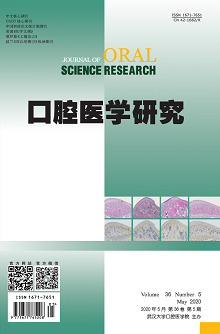|
|
Evaluation the Treatment Effect of Rapid Maxillary Expansion Combined with Maxillary Protraction of Class Ⅲ Malocclusion by GALL Line
Bahaernisa·REZHAKE, LI Zhaoyang, HU Yichun, Dilifeire·TUERHONG, JIA Jun, Zhlihumaer·NUERAIHEMAITI, Gulibaha·MAIMAITILI
2020, 36(5):
465-468.
DOI: 10.13701/j.cnki.kqyxyj.2020.05.015
Objective: To make an analysis on the appearance change after rapid maxillary expansion combined with maxillary protraction based on Andrews six elements of oralfacial harmony. Methods: A total of 25 patients with maxillary deficiency were collected. Before and after the treatments, cephalometric radiographs were measured using GAll line as a reference plane. The measuring results were compared with traditional evaluation index. Results: After treatment, all patients had obvious maxillary anterior displacement and mandibular posterior displacement. The differences of SNA, ANB, PP-FH, MP-FH, L1-MP, U1-SN, MP-FH, B-GALL, Pog-GALL, U1FA-GALL, U1-GALL, L1-GALL, LL-E, LL-GALL, and Ns-Sn-Pos before and after treatment were statistically significant. However, the differences of SNB, Wits, and Y axis were not statistically significant. Conclusion: The results of measurement indexes using GAll line as the reference plane were basically consistent with the results of traditional evaluation indexes. This evaluation method could effectively and intuitively reflect the improvement of the relationship among teeth, jaw, and face after the orthodontic treatment.
References |
Related Articles |
Metrics
|

